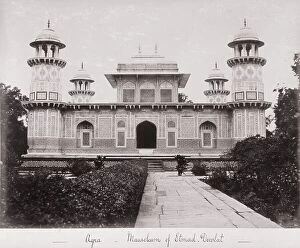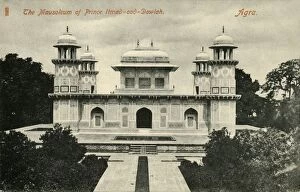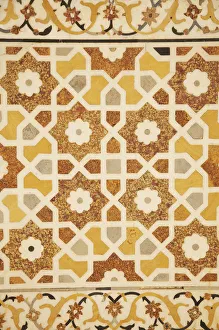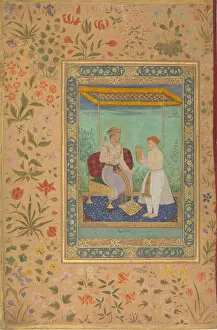Mirza Ghiyas Beg Collection
Mirza Ghiyas Beg, also known as Itimad-ud-Daulah, was a prominent figure in Agra, Uttar Pradesh, India
All Professionally Made to Order for Quick Shipping
Mirza Ghiyas Beg, also known as Itimad-ud-Daulah, was a prominent figure in Agra, Uttar Pradesh, India. His legacy lives on through the magnificent Mausoleum of Prince Itmad-ood-Dowlah. This architectural marvel was created by an unknown artist and stands as a testament to the grandeur of Mughal architecture. The details of Itimad-ud-Daulah's tomb are awe-inspiring. Every intricate carving and delicate marble inlay tells a story of opulence and refinement. The view of the mausoleum captured in c1891 by James Grant showcases its timeless beauty against the backdrop of Agra. Dating back to around 1820, an anonymous creator immortalized I timad-ud-Daula's tomb with their artwork. This portrait captures his regal presence and hints at his significant role during that era. Jahangir, one of history's most renowned emperors, is depicted alongside his trusted vizier I'timad al-Daula in a folio from the Shah Jahan Album dating back to ca. 1615. Created by Manohar, this artwork symbolizes their close relationship and highlights I'timad al-Daula's influence within the empire. Throughout time, various photographers have captured different perspectives of Itmad-Ud-Daulah's tomb. From John Murray's lens capturing its essence in c1858/62 to unknown photographers documenting it during the 1860s-70s or even later in c1890 and c1925 – each image serves as a reminder that this architectural wonder continues to captivate generations. Mirza Ghiyas Beg may be gone but his memory lives on through these stunning representations of his final resting place – a testament to his importance within Mughal society and Indian history overall.










